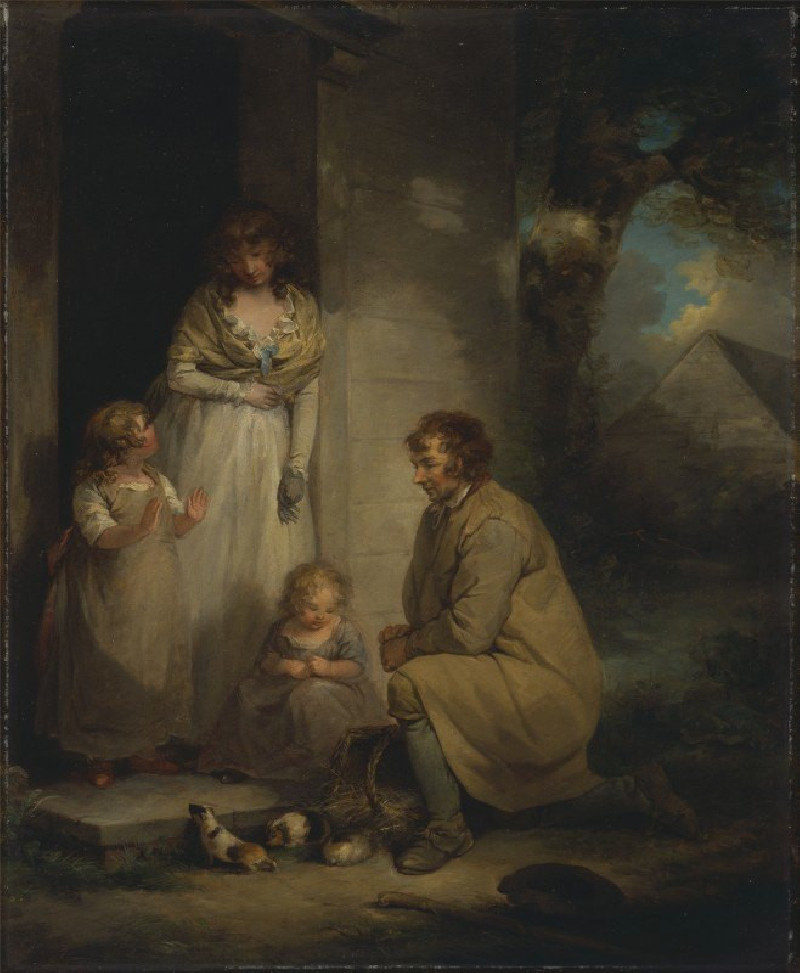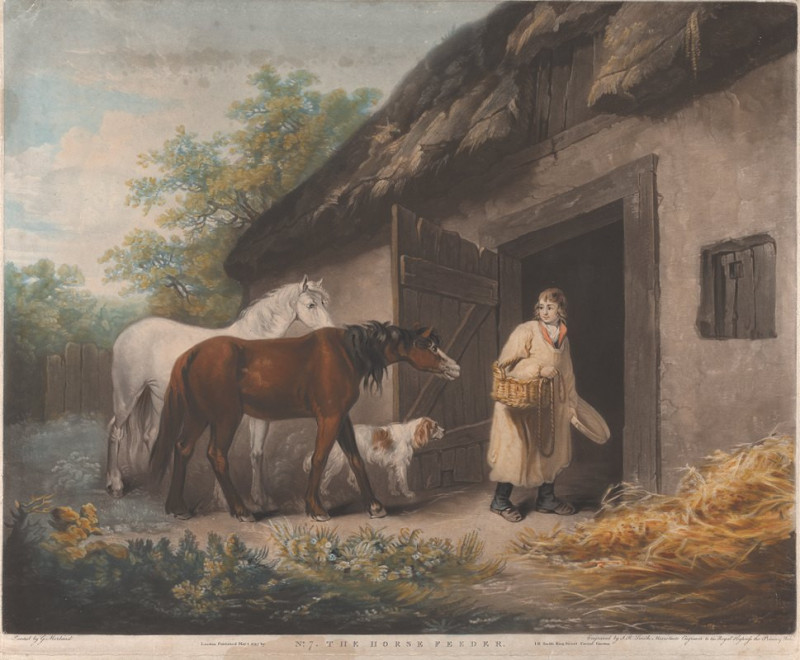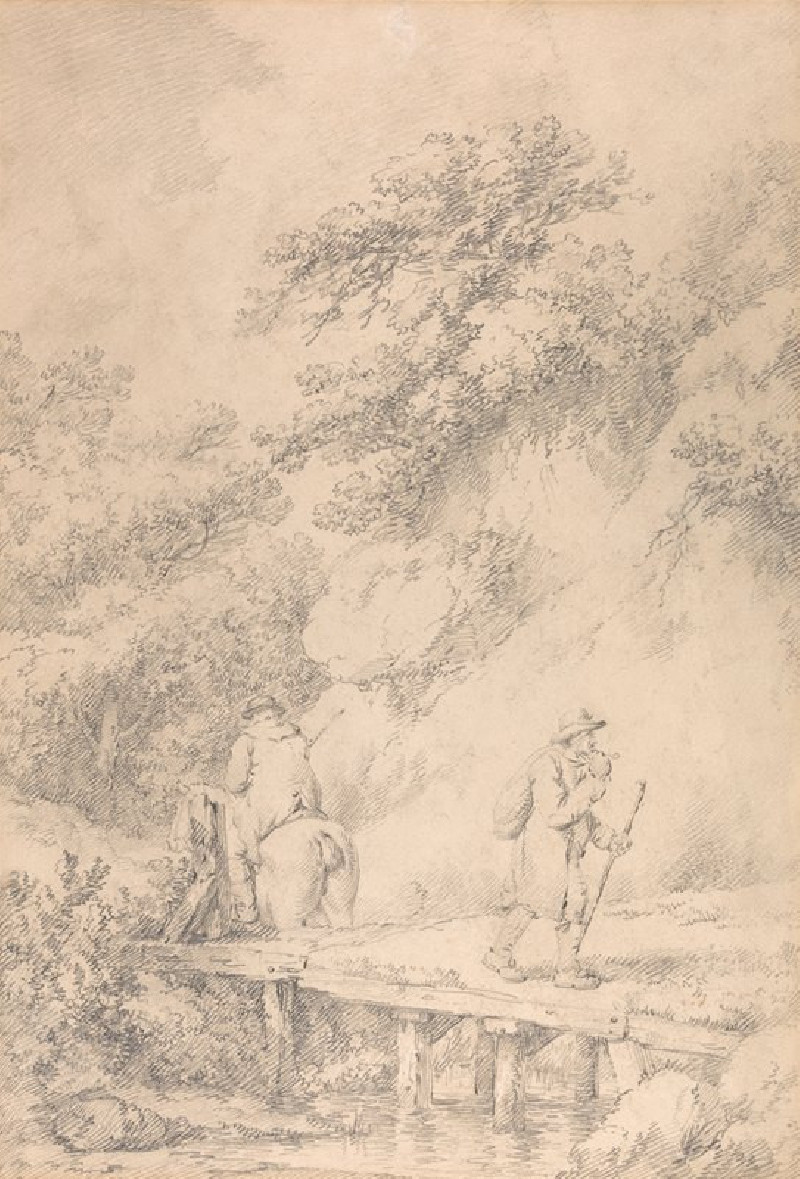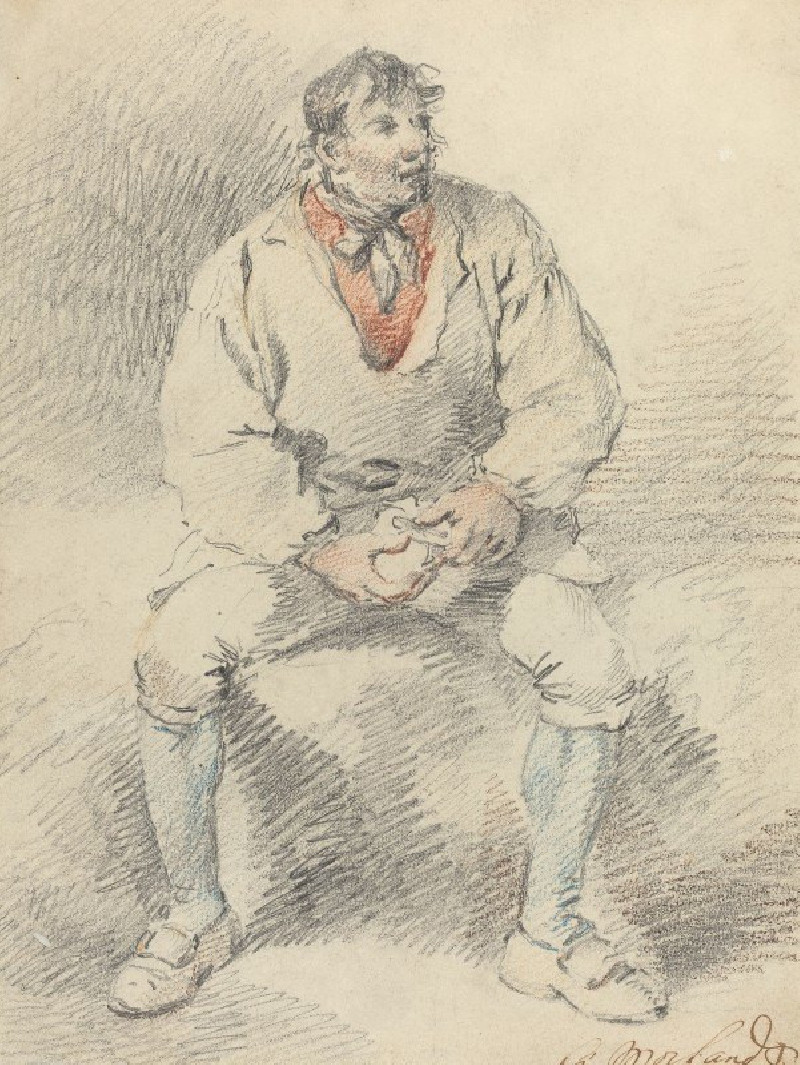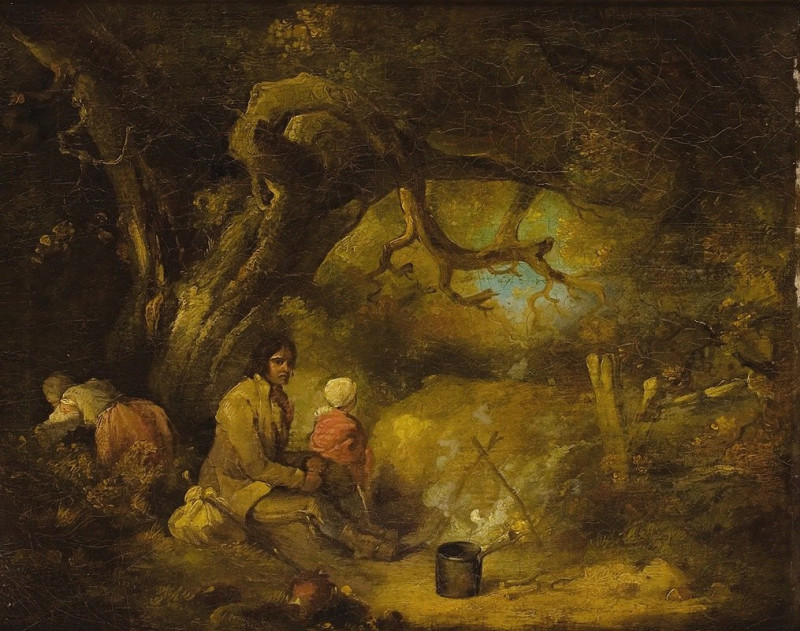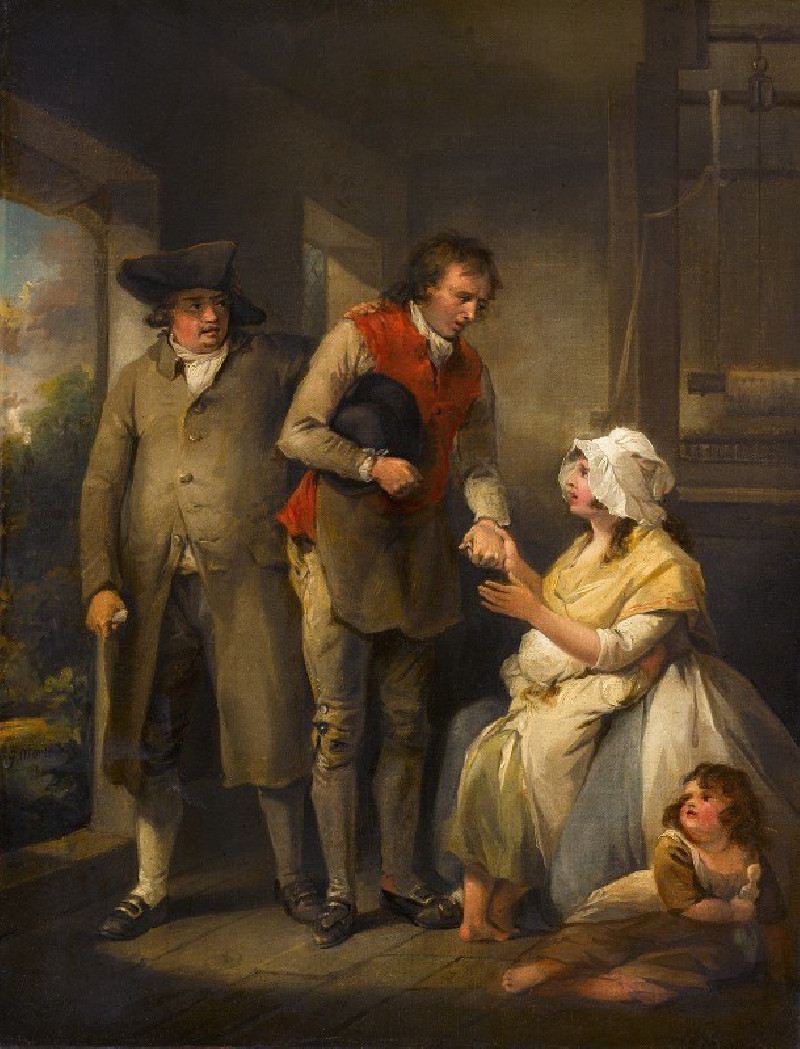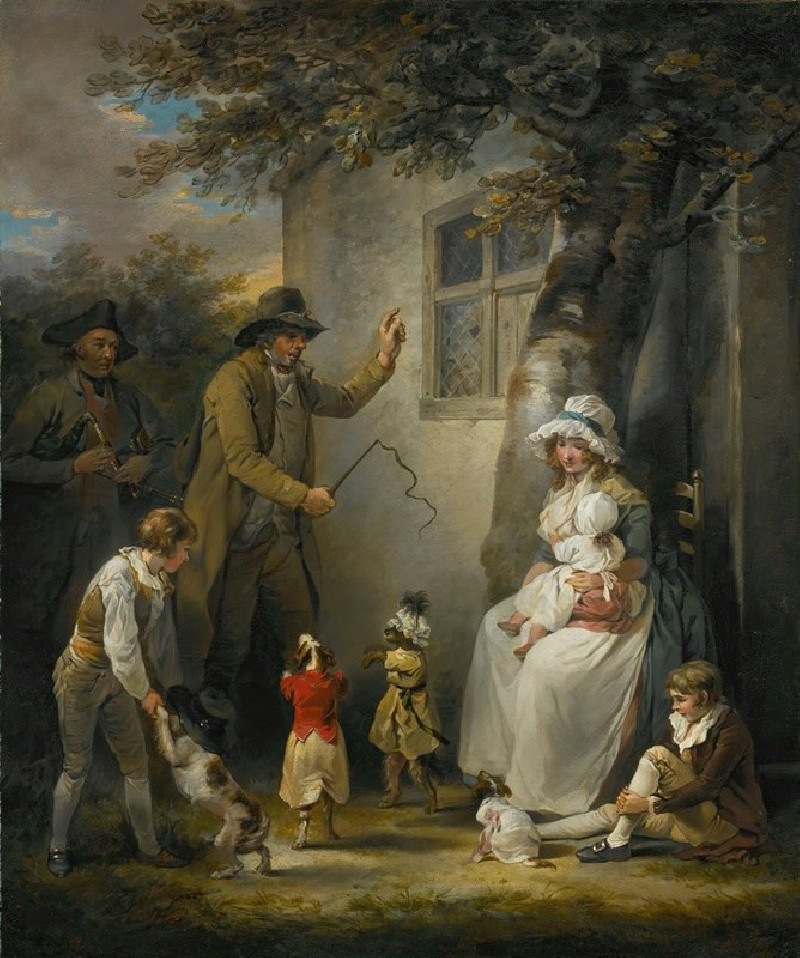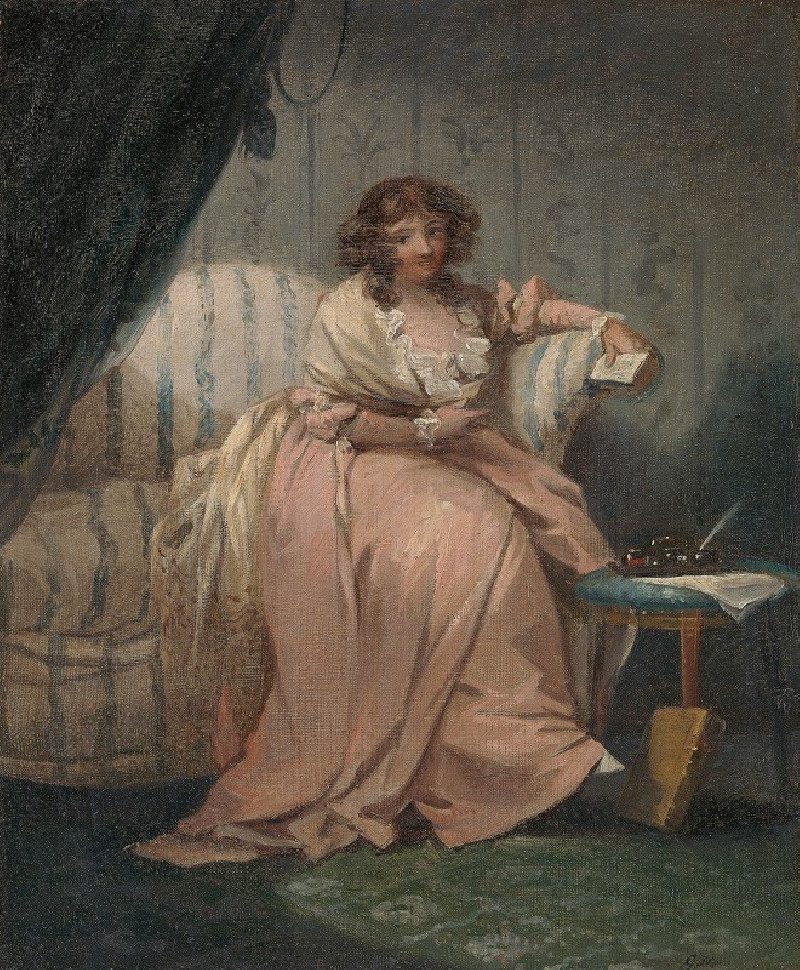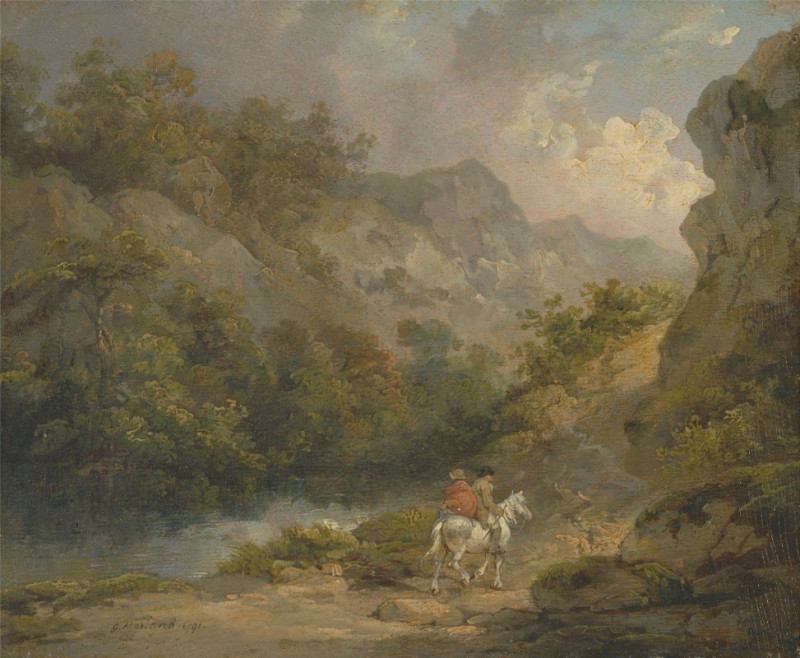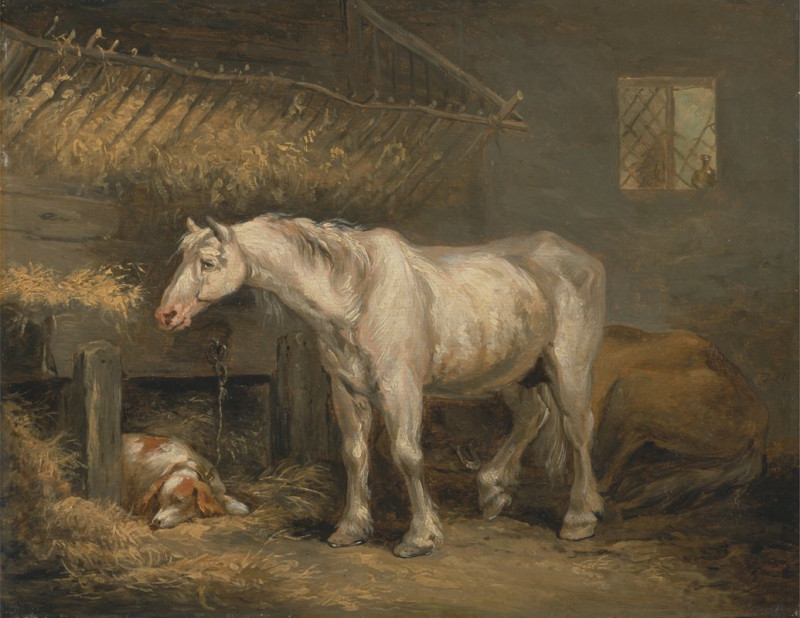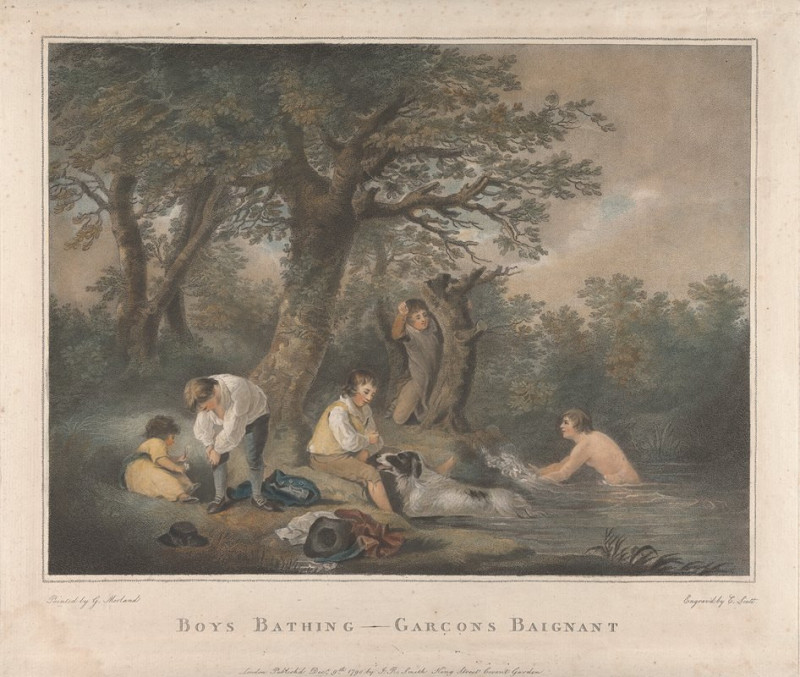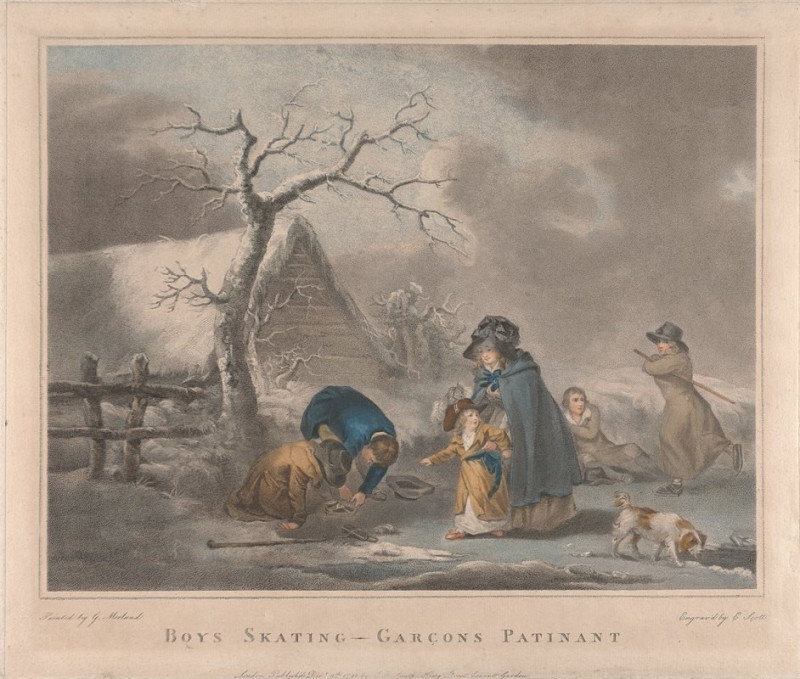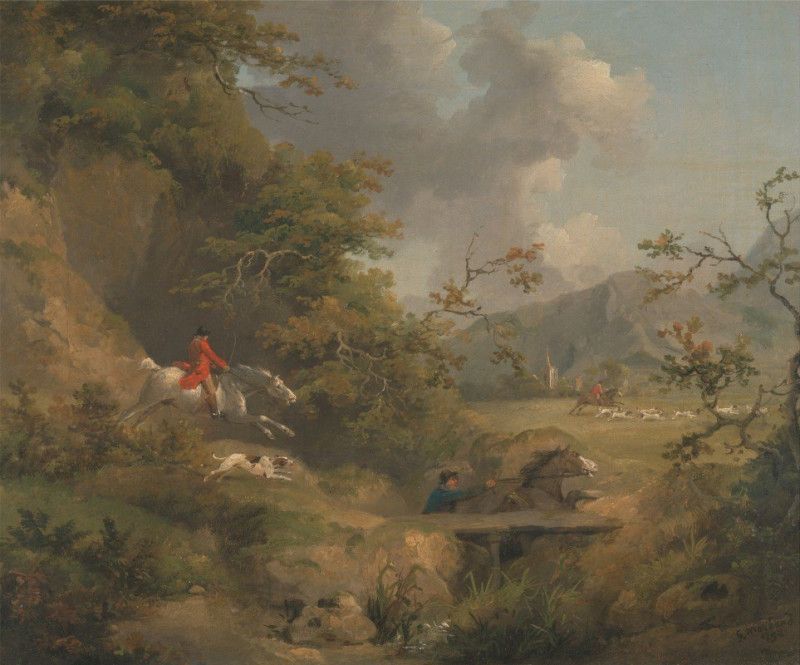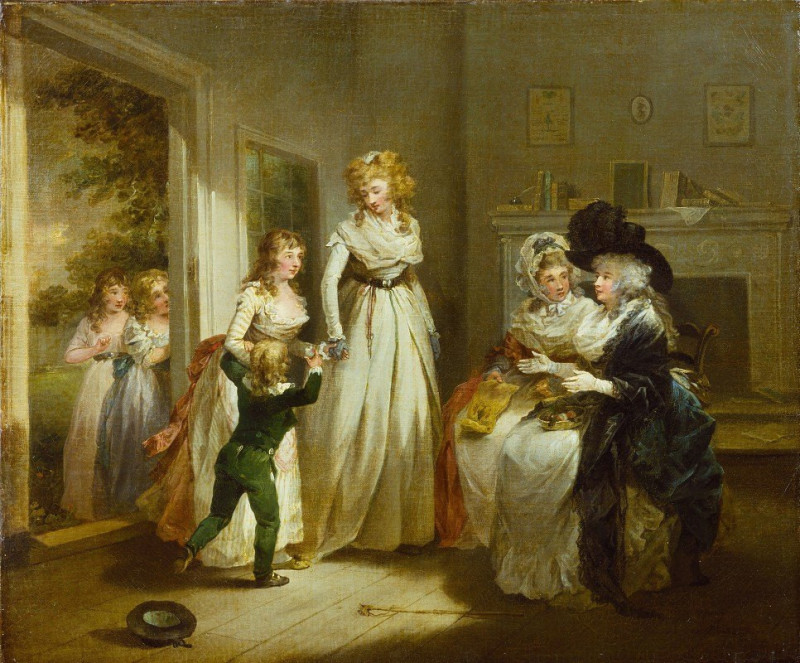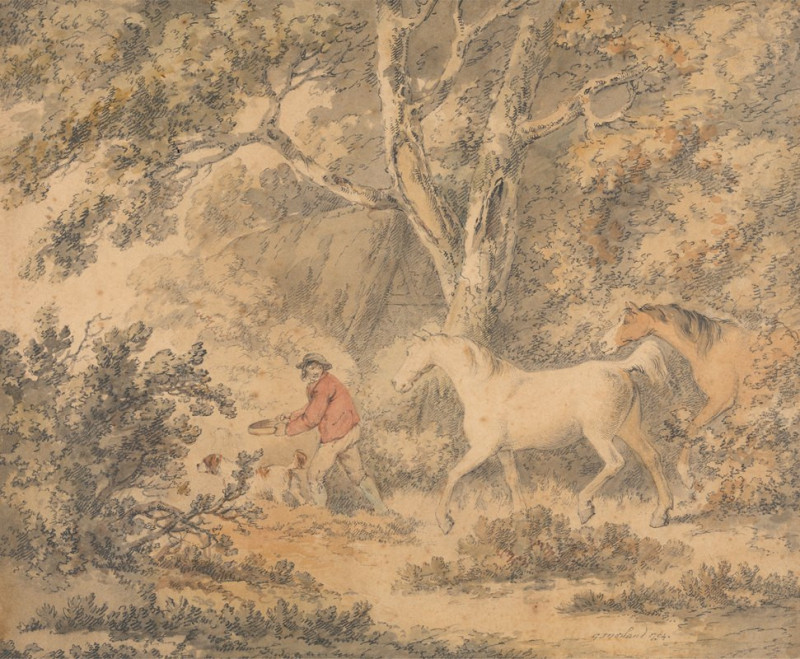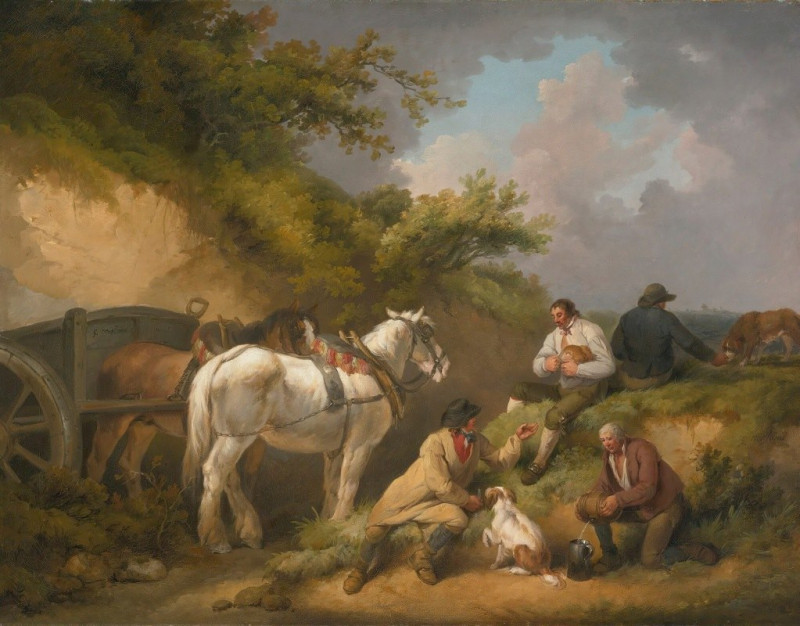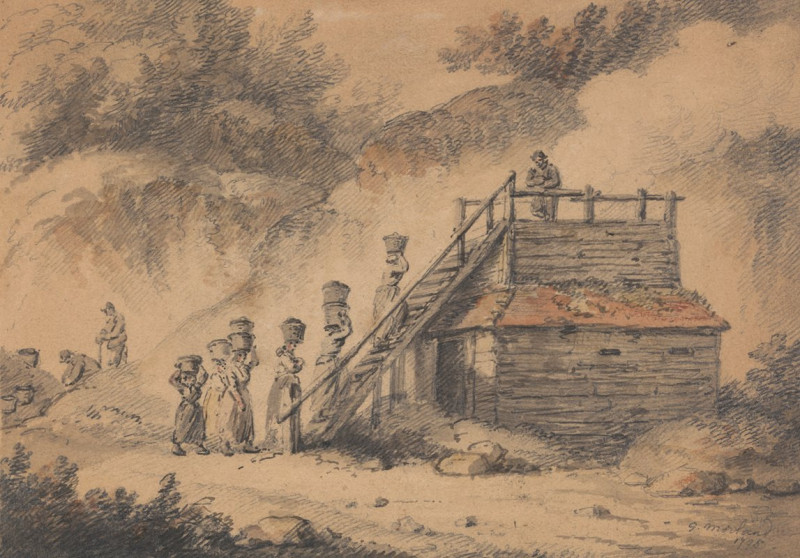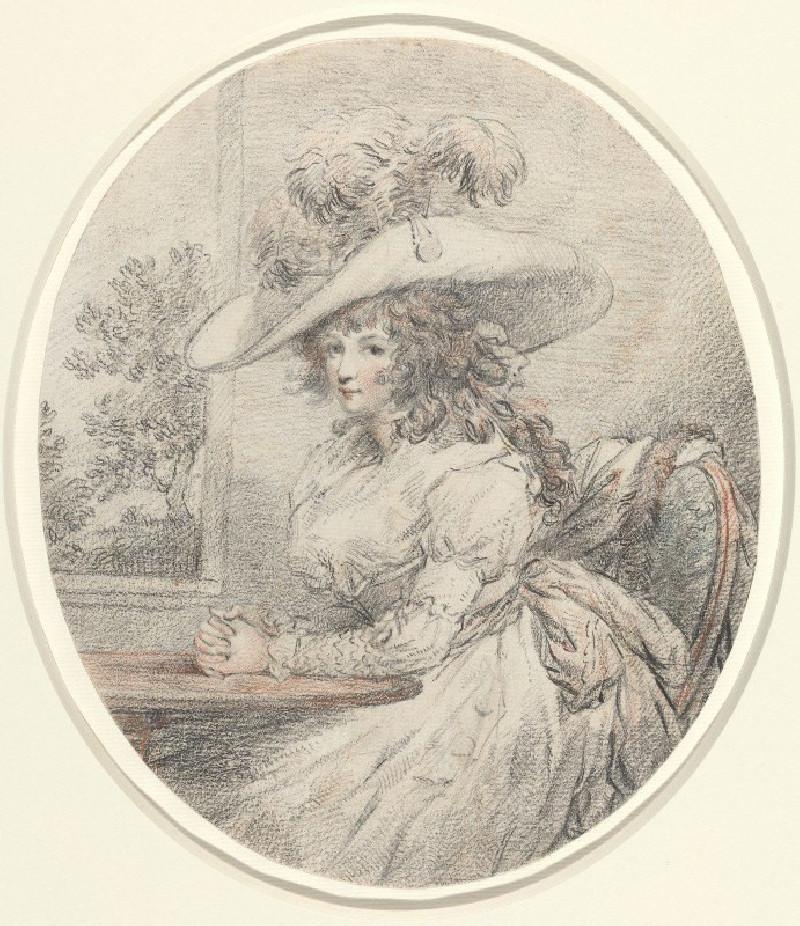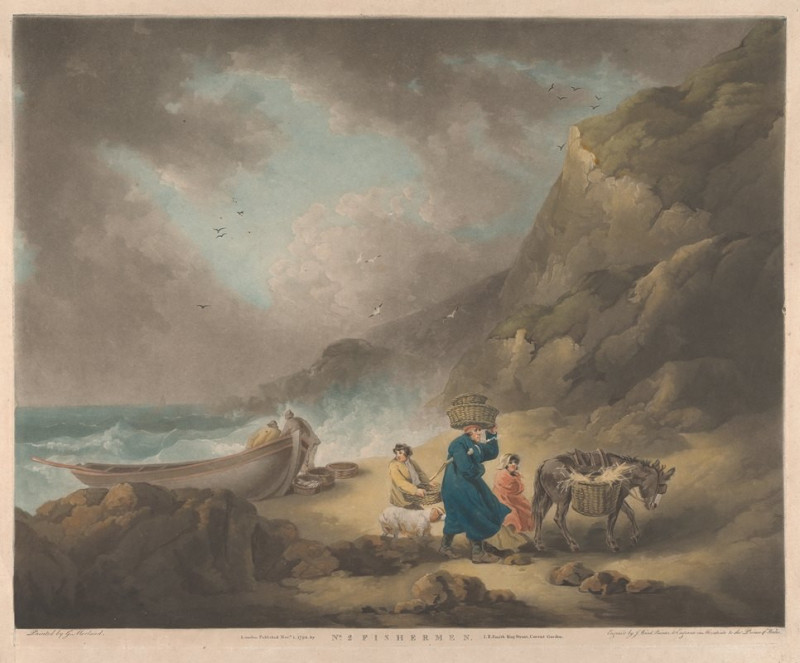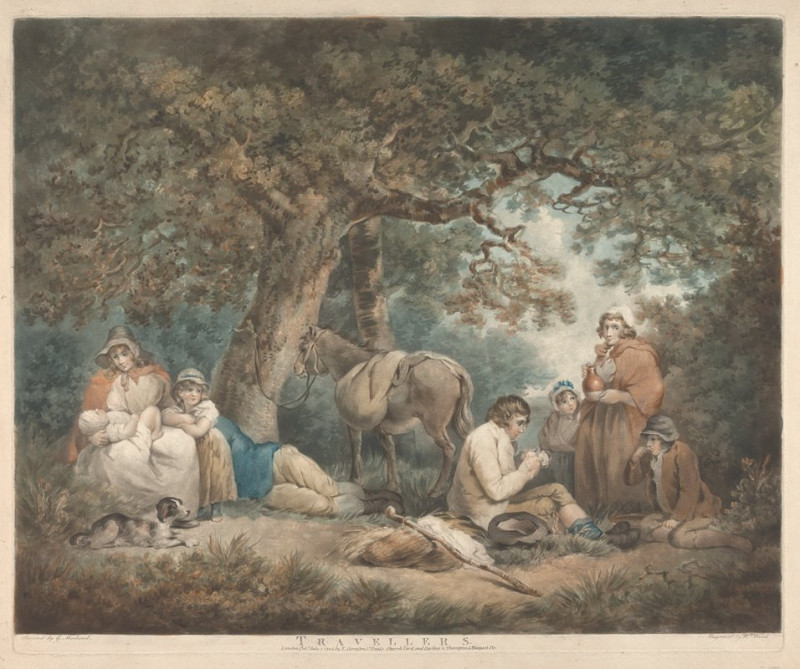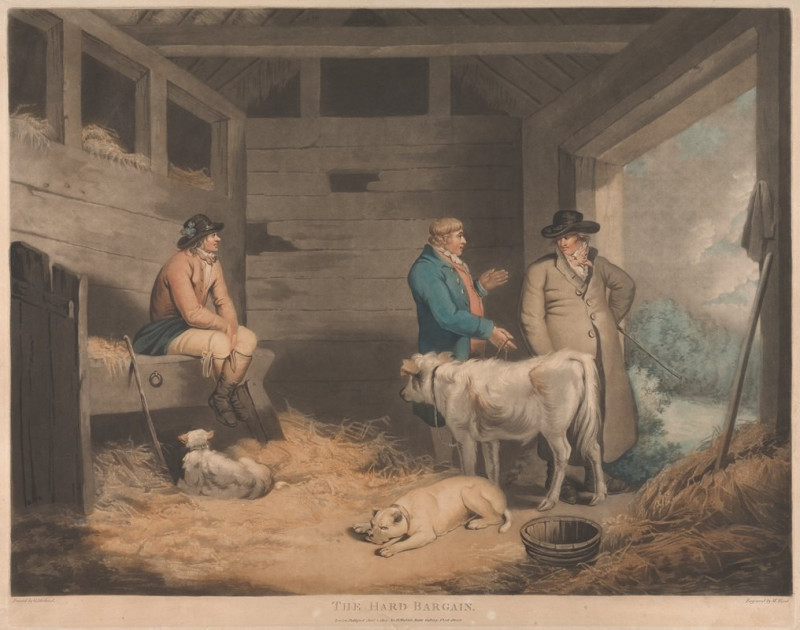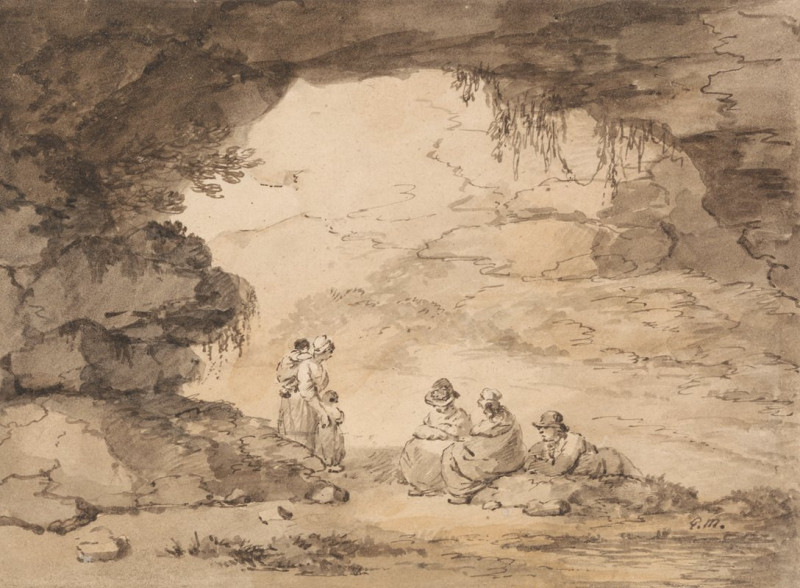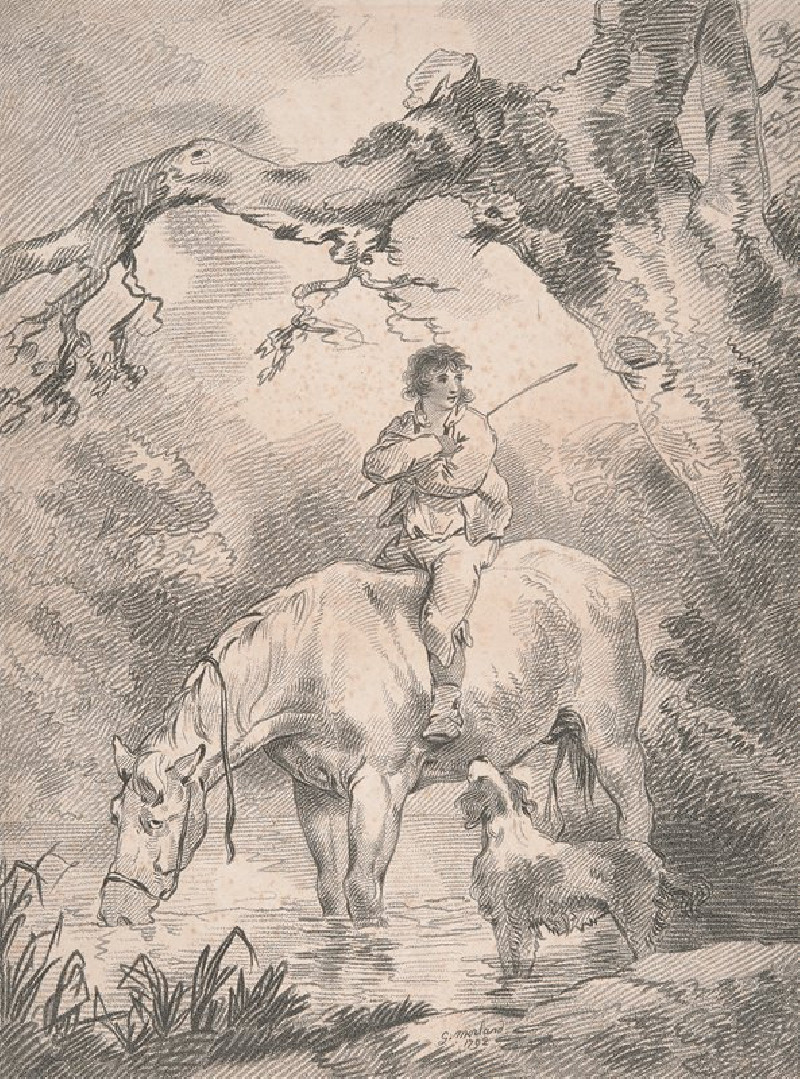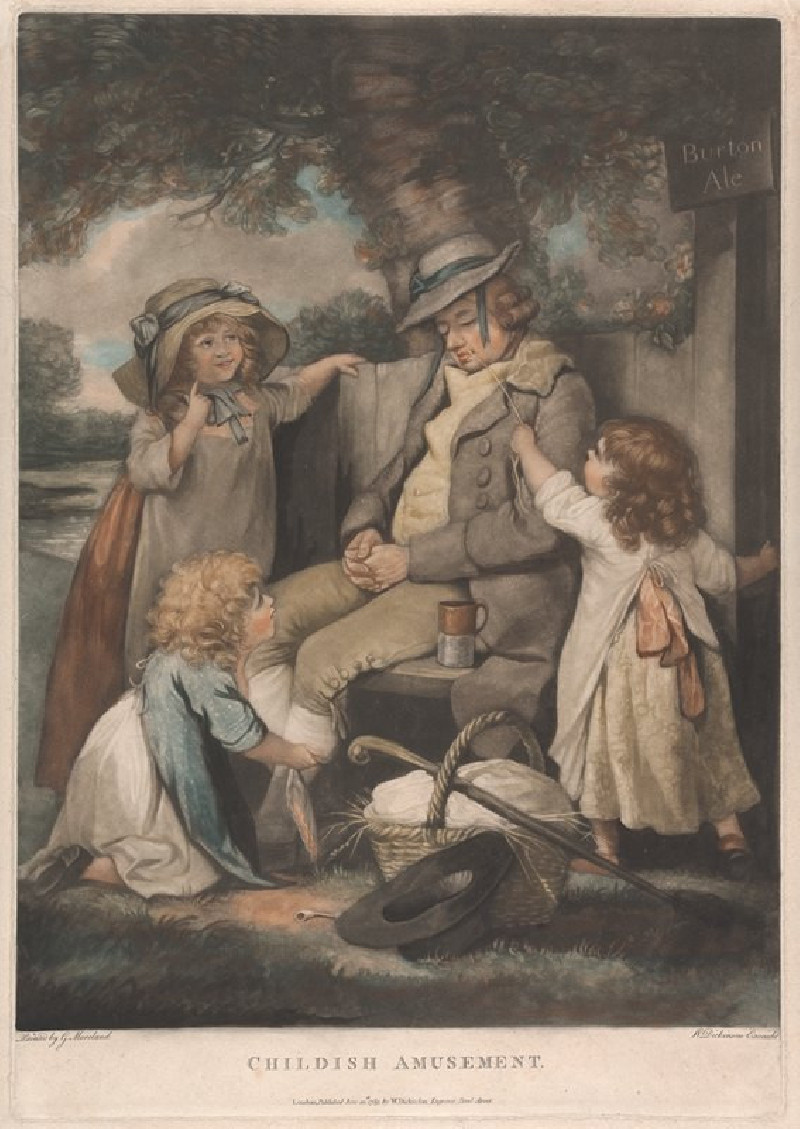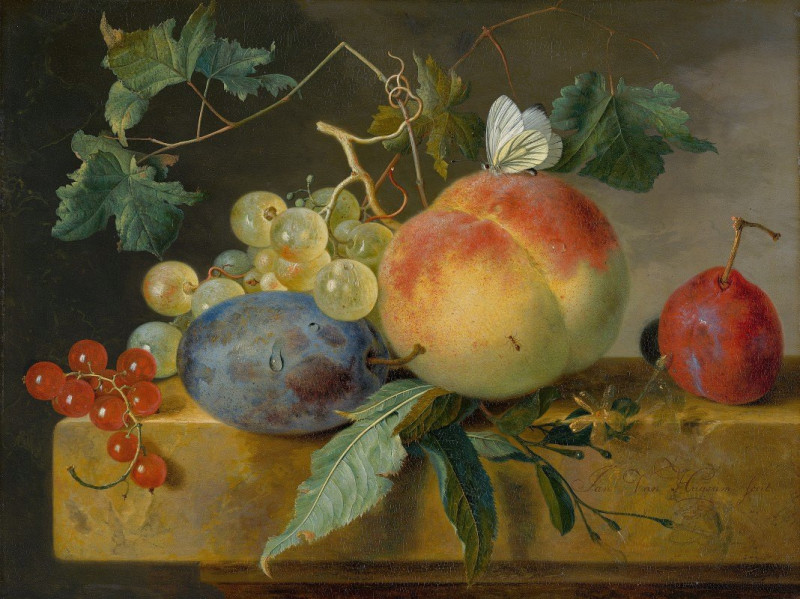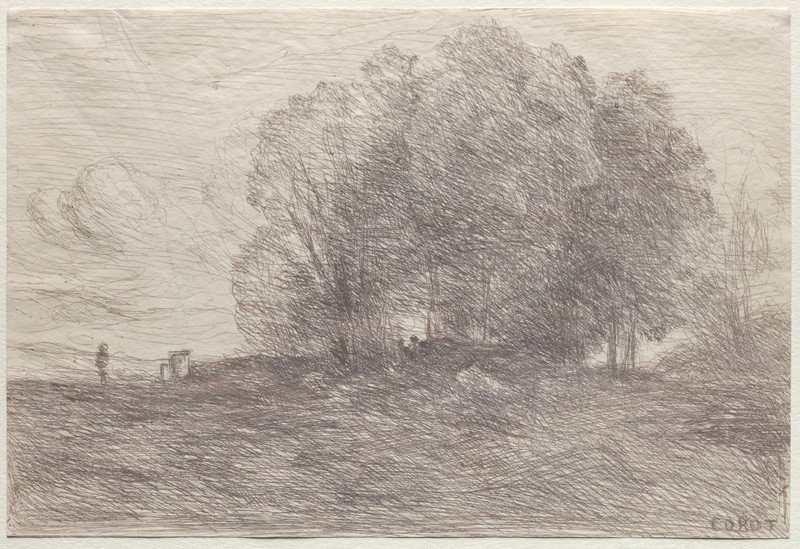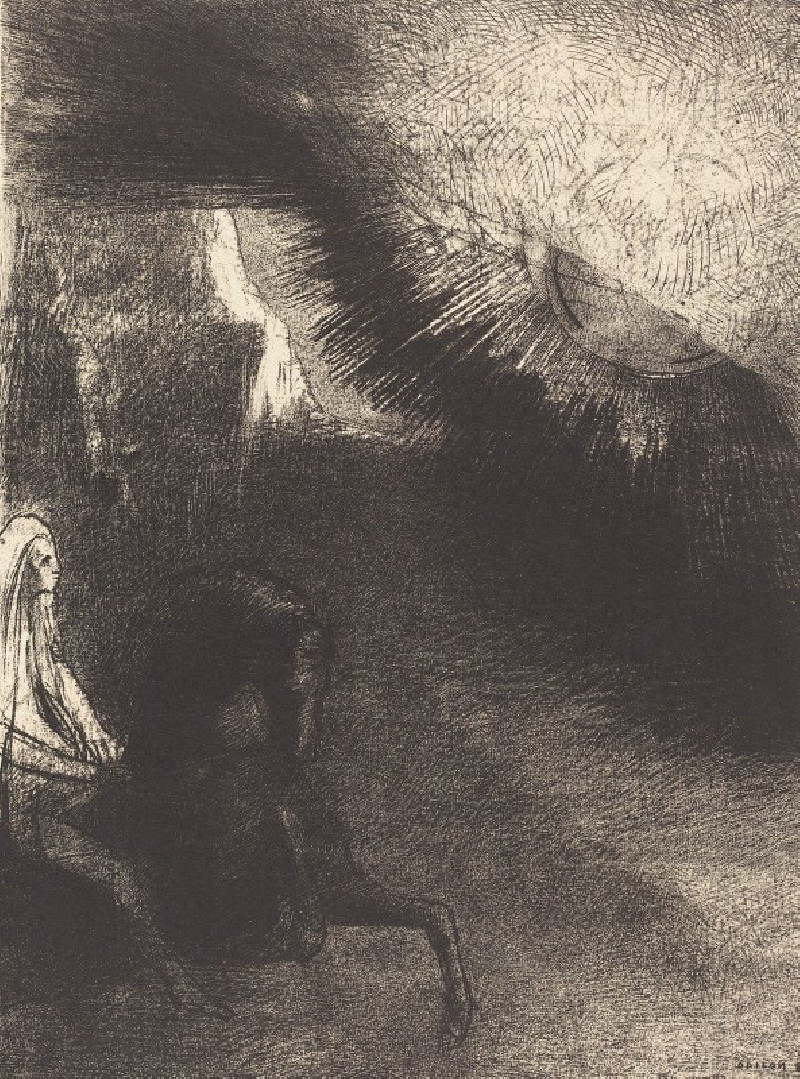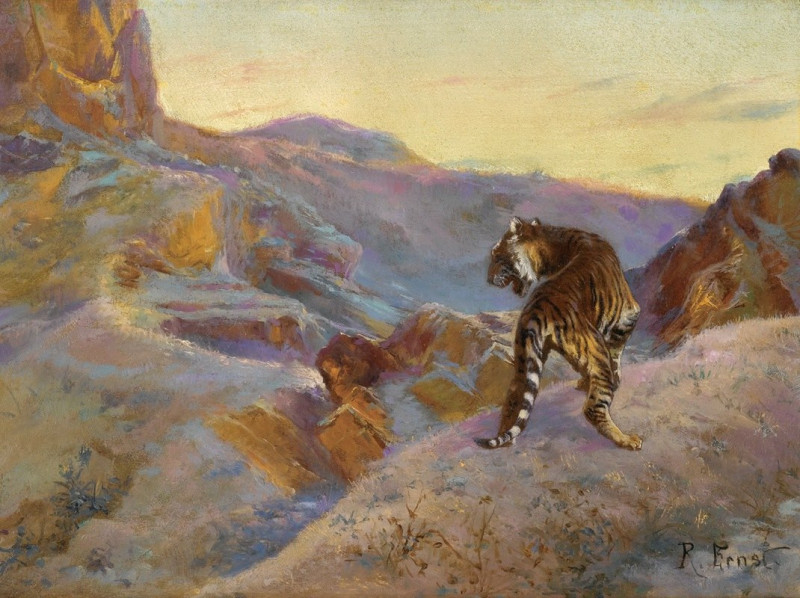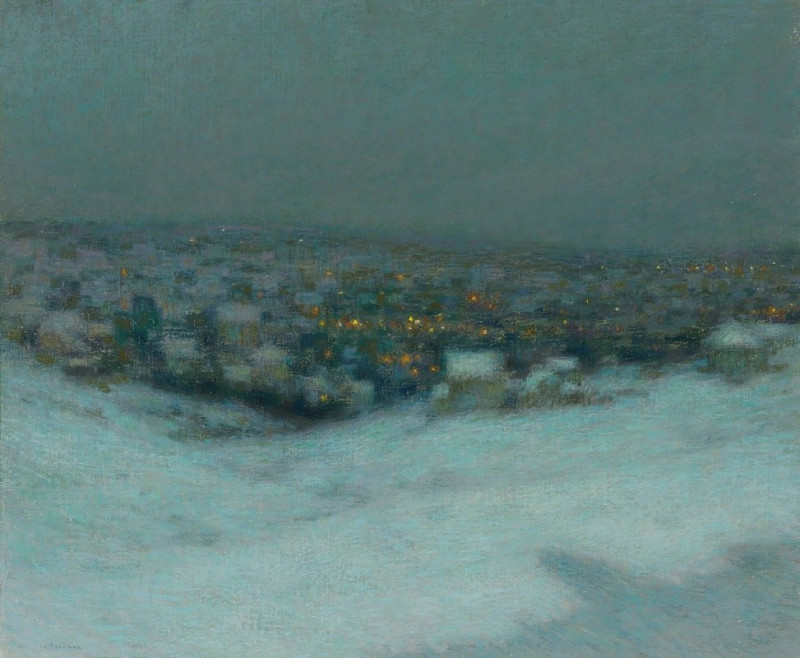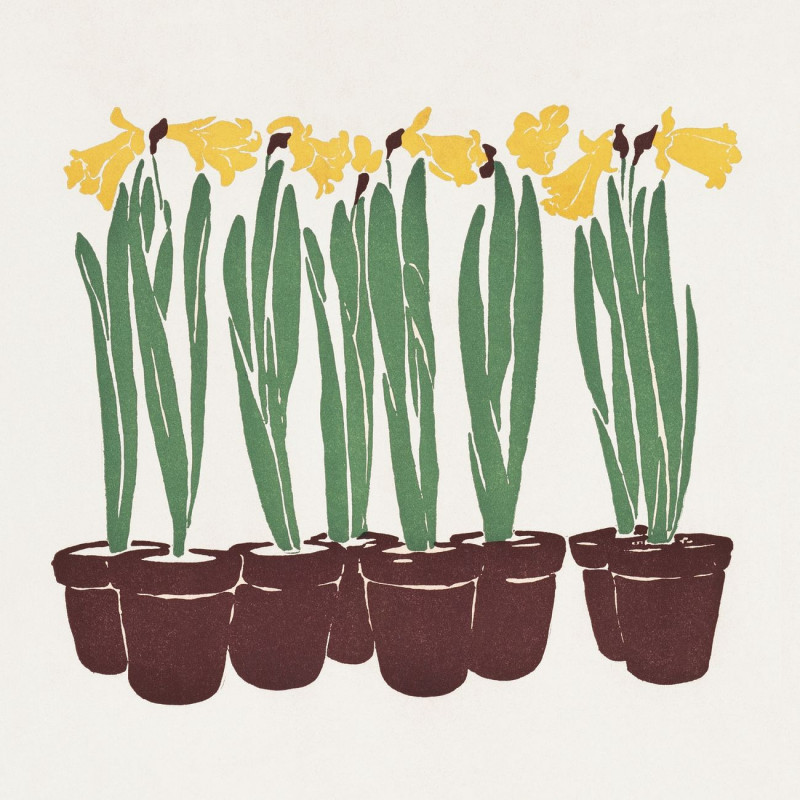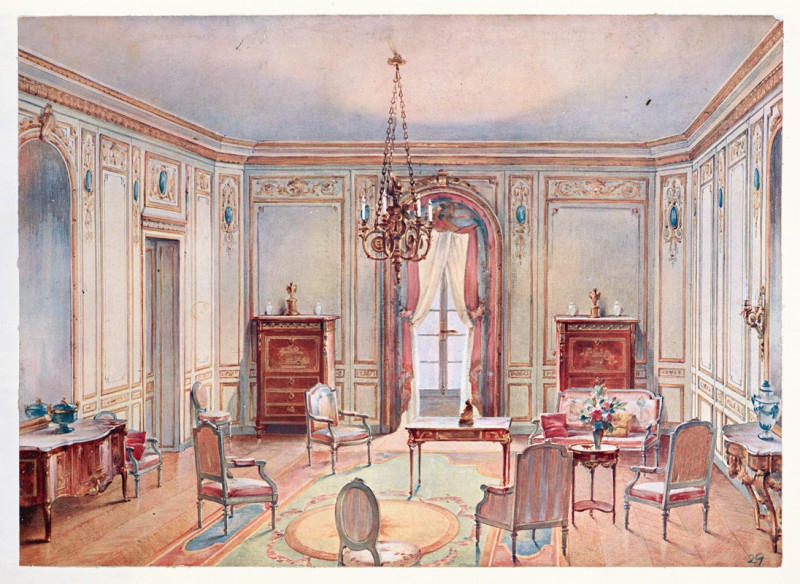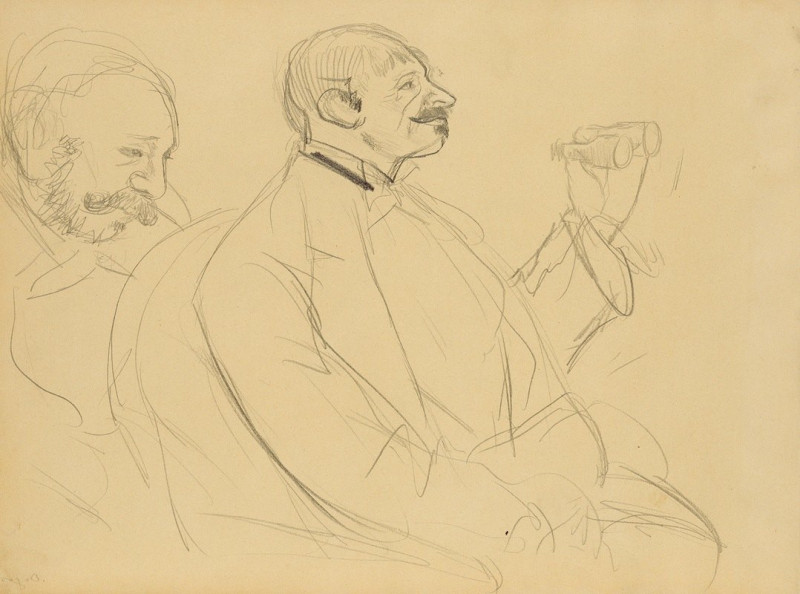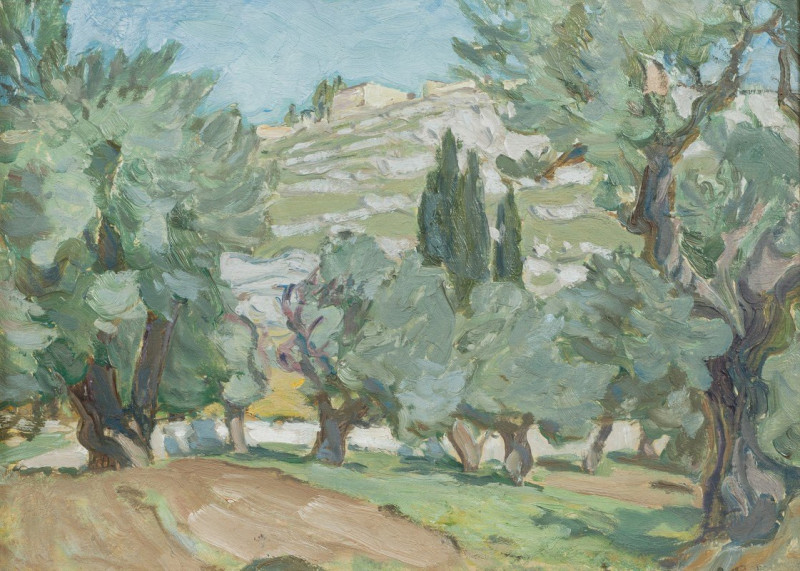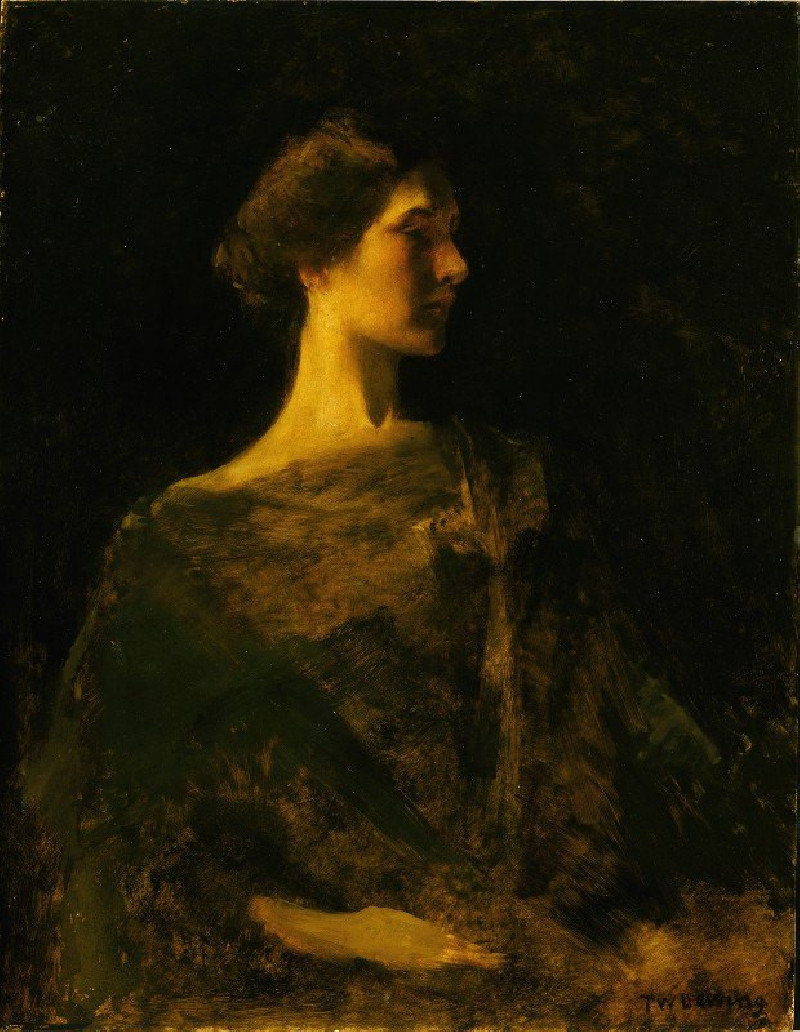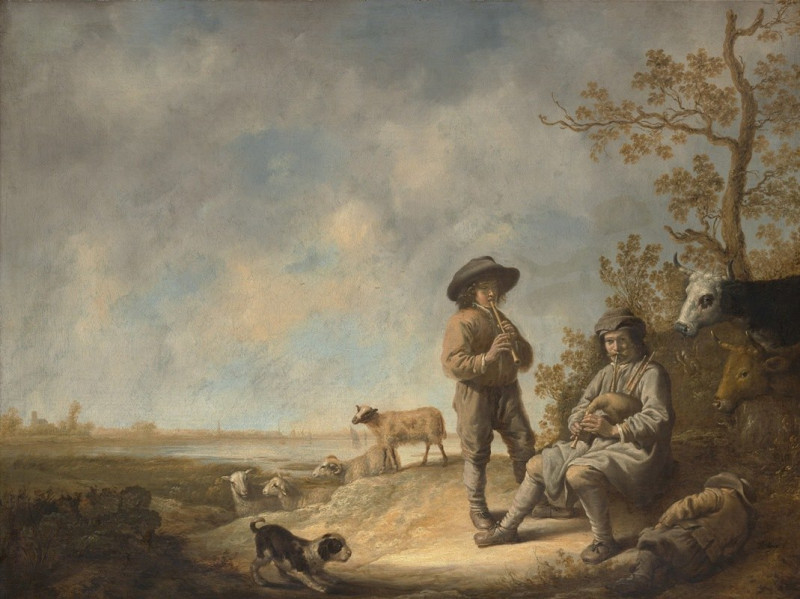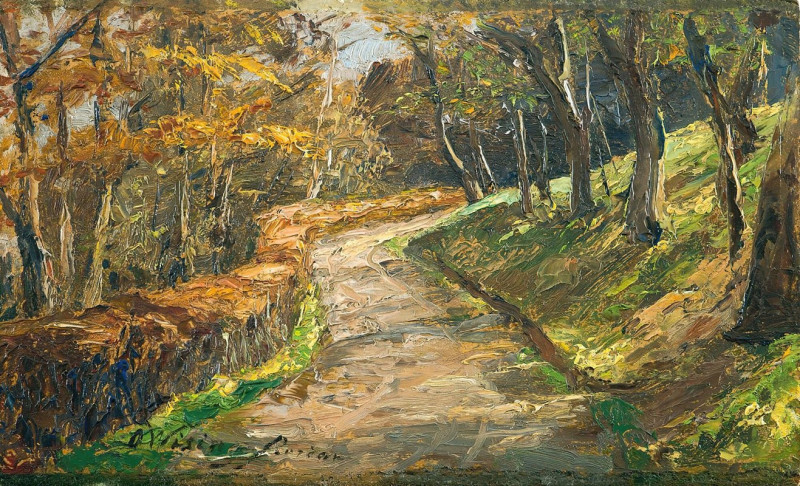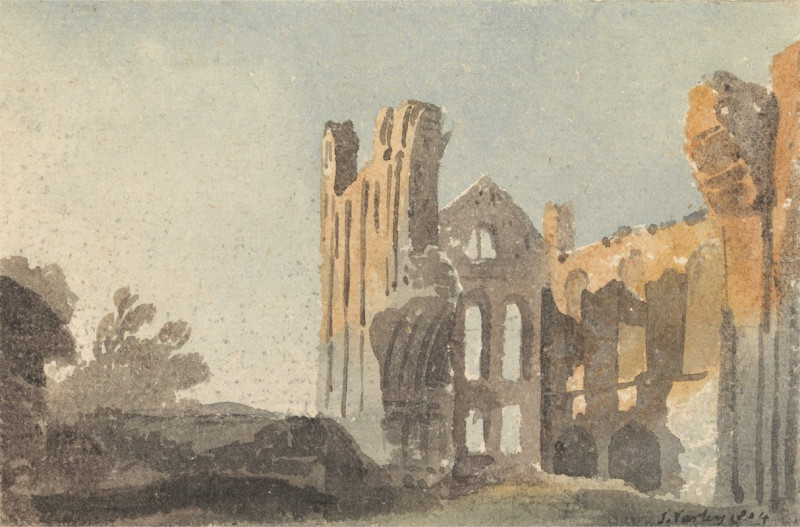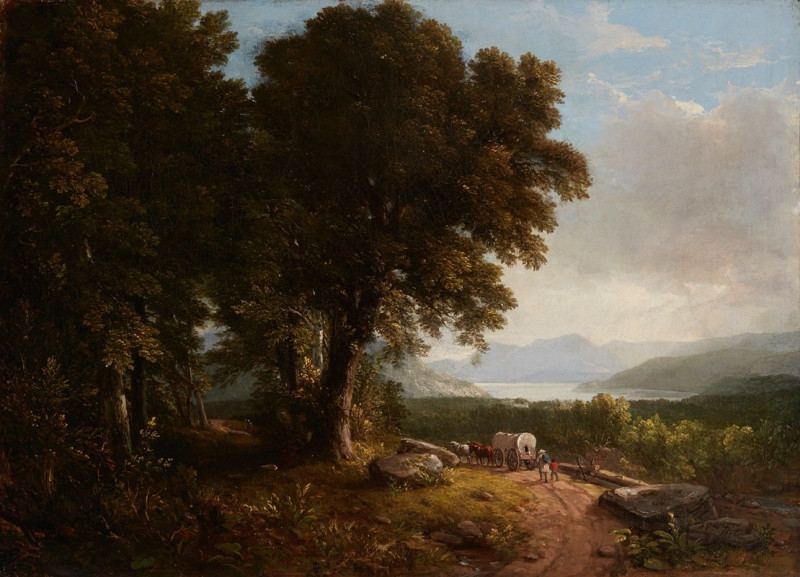Selling Guinea Pigs
Technique: Giclée quality print
Recommended by our customers
More about this artwork
"Selling Guinea Pigs" is a captivating oil painting by the renowned British artist George Morland, acclaimed for his depictions of English rural life in the late 18th century. The painting beautifully illustrates a tender, albeit lively interaction among figures in a rustic setting, which was a hallmark of Morland's intimate approach to daily rural activities.Set against a dark forested background that merges seamlessly into a rustic building corner, the scene is an intriguing mix of darkness and light. A woman stands at the center, bathed in a soft glow that highlights her gentle expression as she holds a small bird. To her left, a small child gesturing animatedly adds a dynamic energy to the scene, while another child sits contentedly on stone steps, closely watching the heart of the painting’s action.The focal point of the piece is the exchange happening between a seated man and the animals around him. Dressed in a simple brown coat, the man exudes a sense of weary kindness, engaging with two guinea pigs on the ground, presenting them to the children as potential pets. The interaction not only depicts a transaction but also a moment of quiet joy and connection between humans and animals, a recurrent theme in Morland's work.This piece not only exemplifies George Morland's skill in composition and his ability to capture the essence of rural life but also reflects the societal interactions and simple pleasures of his time.
Delivery
Returns
George Morland (26 June 1763 – 29 October 1804) was an English painter. His early work was influenced by Francis Wheatley, but after the 1790s he came into his own style. His best compositions focus on rustic scenes: farms and hunting; smugglers and gypsies; and rich, textured landscapes informed by Dutch Golden Age painting.

